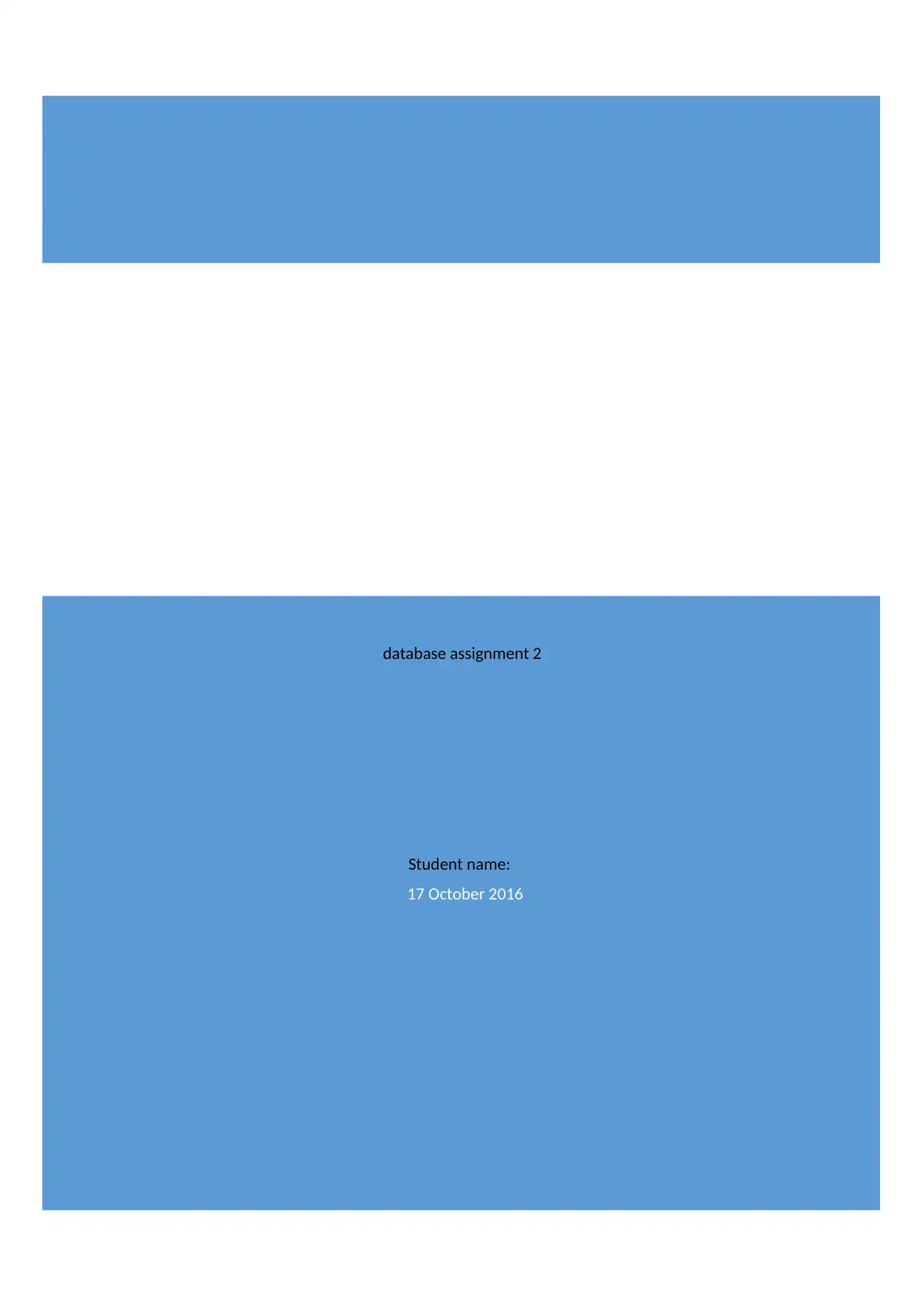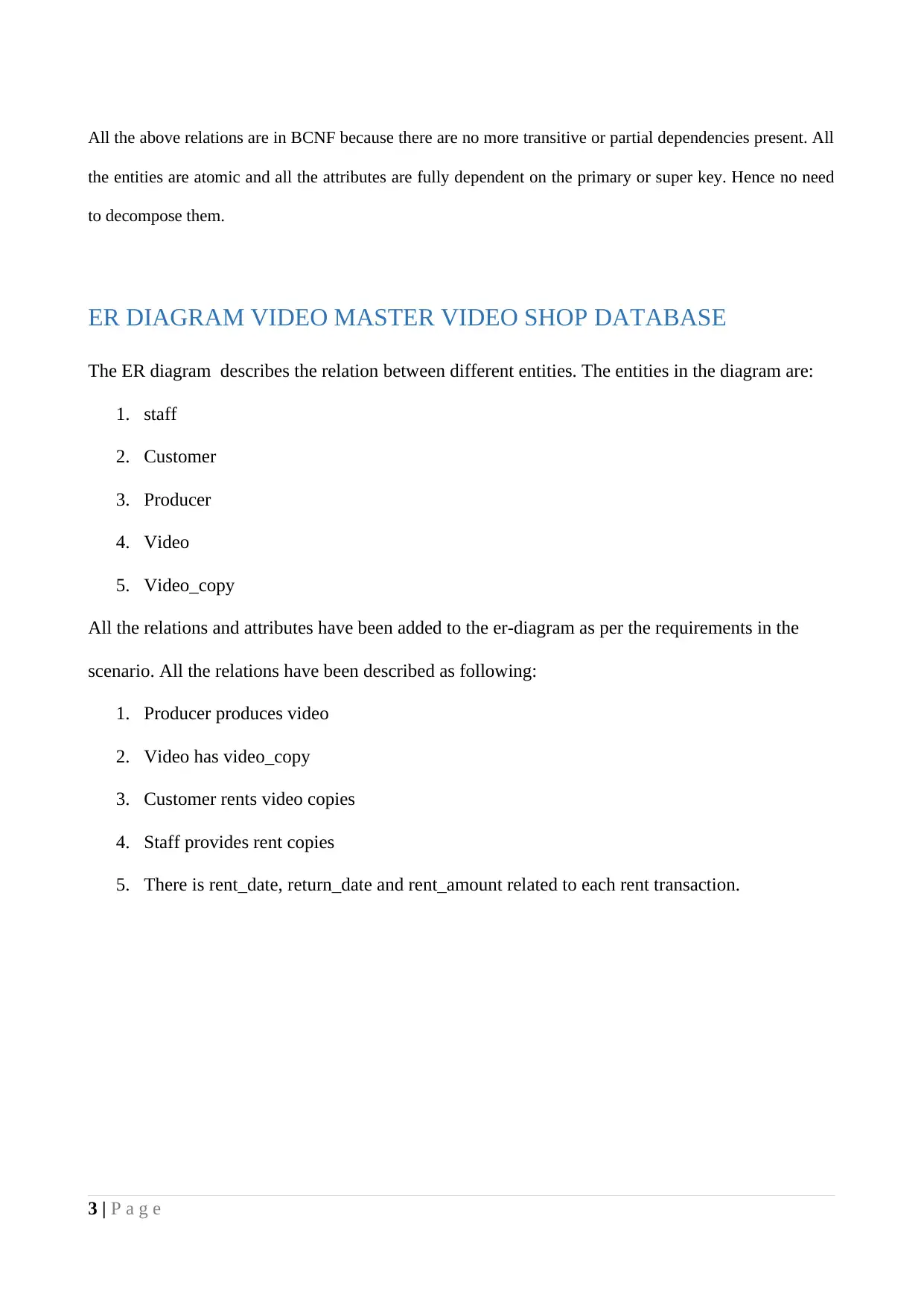Database Assignment 2 - Database Design, SQL Queries, and ER Diagram
VerifiedAdded on 2019/09/22
|7
|813
|260
Homework Assignment
AI Summary
This document presents a comprehensive solution to a database assignment. It begins with a relational model, outlining tables like TestReport, Product, and Order, and their attributes. It details functional dependencies within the database schema, ensuring BCNF normalization. An ER diagram illustrates the relationships between entities in a video shop database, including staff, customers, producers, and video copies. The assignment also includes SQL commands to address various research questions, such as identifying academics who haven't written papers, finding academics with multiple research interests, determining research fields without academic interest, and finding fields with the largest number of interested academics. The solution provides the SQL queries and their outputs, demonstrating proficiency in database design and query execution. The solution also corrects a syntax error in a given SQL query, providing the correct version. Overall, the assignment showcases a strong understanding of database concepts, including relational models, ER diagrams, functional dependencies, and SQL queries.
1 out of 7













![[object Object]](/_next/static/media/star-bottom.7253800d.svg)